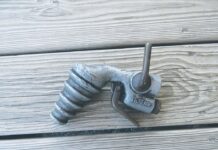It is often said that closeness only counts with horseshoes and hand grenades, but I have witnessed it in other aspects of life. For example, many times I’ve experienced a close call on having an automobile accident or avoiding an injury, and the list could go on.
But, before I do, the game of horseshoes is seldom played today. It’s a game where you launch horseshoes toward a metal stack to get a ringer, where the shoe circles the stake, worth three points, a leaner, which is one to two points, or one point if you are closest (or within six inches based on players rules). Oh, and you could make up your own rules, like with about any game.
Well, what about the close-up period for dry cows? Typically, the close-up period for dry cows on most dairy farms is targeted for 21 days; however, cows don’t always calve based on the expected calving date. Factors such as twins, cows bred with sires for calving ease and more, can often lead to calving at less than 282 days of gestation.
Close-up pen
However, when we calculate dry off date, it is usually 282 days from date of last breeding with a confirmed pregnancy minus desired days dry. Then using the expected calving date, cows will be moved into the close-up pen 21 days prior.
We use the close-up pen to increase the dietary energy concentration in the diet, introduce feeds more likely to be fed after parturition and use some feed additives to reduce the risk for transition diseases. Yet, despite our best attempts, cows sometimes don’t spend enough time in the close-up pen to accomplish our goals.
To illustrate this issue, the data in Figure 1 is from research published in the February 2022 issue of the Journal of Dairy Science by researchers from Germany. They were actually studying the factors associated with colostrum quantity and quality on a large commercial dairy farm.
Impact
With 7567 observations, the close-up period averaged about 20 days across all cows regardless of parity, but the range was one to 41 days. Of course it’s not good to be in the close-up group too long, as body condition can become excessive.
However, a large population of first lactation and older cows were experiencing less than 21 days in the group, with even many experiencing less than seven days. This situation results in a considerably higher risk for transition cow diseases.
In addition, these researchers found that number of days in the close-up pen impacted yield of colostrum, with increasing days in the close-up period increasing the yield of colostrum. Colostrum yield has been a struggle for many farms and there are many factors that can influence the yield and quality of colostrum.
In one of our studies with Holstein cows at Ohio State, the yield of colostrum averaged 13.4 pounds among 53 cows, but the standard deviation was 8.4 pounds (63% of the mean yield — which is very large).
Target
In summary, cows spending less than the optimal (or target, in the case of 21 days) time in the close-up period can increase the risk for transition cow disease, negatively impact milk yield in the upcoming lactation and possibly decrease yield of colostrum. How close is close enough?
There are many variables involved, but we should be carefully monitoring breeding dates and dry-off dates for when to move cows to the close-up pens and then for our respective herd, we should be calculating the average number of days in the close-up pen. If we are falling short, then we need to be moving cows sooner.
Often we will fail to get a ringer of 21 days, but frequently when evaluating our close-up cow group, we will need to move a greater population of our cows to calving with three to five days of our target — we’ll receive dividends for this accomplishment.














